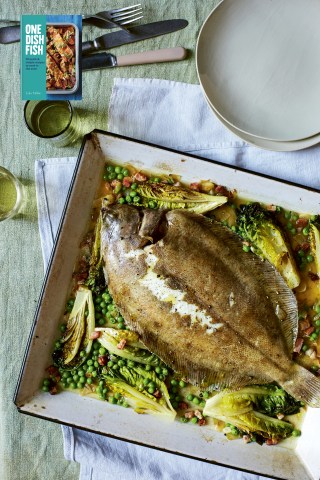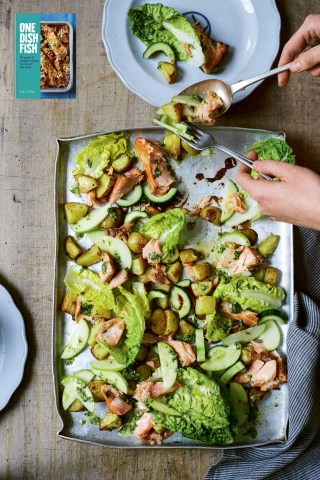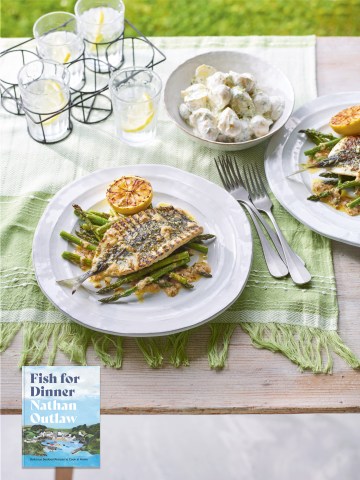The Palomar’s store cupboard essentials
The best place to start? For me, it’s got to be the storecupboard. I have to admit that I’m something of a pantry voyeur; you can tell so much about people and their culture by having a good rummage through their kitchen cupboards. As a kid with a growing interest in cooking, this was the first place I looked in a new friend’s house. There are always interesting ingredients to discover in someone’s storecupboard, and it provides an immediate insight into the basics of their cooking culture. The Palomar pantry and my home pantry are pretty much the same; there you’ll find pomegranate molasses alongside rice vinegar, freekeh and risotto rice, a collage of ingredients with a strong Middle Eastern inflection, my interpretation of the old and the new. The truth is, equipping your storecupboard is much easier than it seems, especially now that you can get anything and everything online. We do live in exciting times. Most of the ingredients will last a long time, and even if you’re cooking on a daily basis, you might only have to stock up a maximum of two or three times a year — not a huge task. I strongly recommend doing one big stock-up rather than trying to source individual items for each recipe. It will make your life easier and take your daily cooking experience to a whole new level.
– Tomer Amedi, Head Chef at The Palomar
Freekeh
Simply put, freekeh is smoked green wheat. The wheat is picked
while still young and moist, then piled up and set on fire; the
end result is a herbal, smoky cereal that is way more fun to cook
with than regular wheat. To this day, the Druze, an esoteric
religious community living in the Galilee area, still use the old-school
methods of production (it’s even mentioned in the Bible!),
and it’s an important ingredient not only in Galilean cooking
but also in Lebanese, Syrian and Egyptian. It’s easy to cook
with — you just need the right amount of liquid and some love
and attention.
Bulgur wheat
Bulgur is wheat (usually durum) that has been pre-cooked, then
dried and cracked. It became popular in the Middle East thanks
to the influence of the Ottoman Empire. The wheat is cracked to
three different particle sizes — coarse, fine and jarish (extra fine)
— and each size is good for a different use, for example in kibbeh,
tabbouleh, Kubenia and so on. It’s also versatile in
that it can be served hot or cold. But the best thing about bulgur
is that it’s super-easy to cook with — no actual cooking is needed,
just a soak in boiled water, salt and a touch of oil.
Pomegranate molasses
This thick, dark, rich, sour and tangy liquid is a big star in
Persian cuisine and it is one of my favourite ingredients.
Basically it’s a reduction of pomegranate juice so the flavours
are really concentrated. We use it in the restaurant for stews,
vinaigrettes, vegetables and even in desserts.
Date syrup
This date honey, also called date molasses, has a great natural
sweetness and a loose texture. It’s good not only for desserts or
as a substitute for honey but for vinaigrettes and savoury dishes,
too. My papa likes to mix it with raw tahini and spread it on
toast for breakfast. He’s smart, my old man.
Tahini
The king of pastes and a mega-key ingredient in Middle Eastern
cooking, tahini is made from ground sesame seeds. The quality
of the tahini is determined by whether the sesame seeds are
unhulled or hulled, toasted or not, and the method used to grind
them, for example stoneground. For me, a good tahini should
be nutty and smooth with a hint of sweetness. Mightily versatile,
tahini is great in so many kinds of dishes, savoury and sweet,
raw or cooked, and it’s very easy to handle. Good brands to
look for are Al Nakhil, Al Arz and Al Taj.
Israeli couscous
Called ptitim in Hebrew, this is basically a flour- and waterbased
baked pasta. The story behind this awesome ingredient
goes all the way back to the austerity period in Israel (1949–56),
when times were hard and the first Prime Minister of Israel,
David Ben-Gurion, approached the biggest food company at
that time, Osem, and said: “Guys, I need a tasty, easy, cheap,
kick-ass fast-food solution, so go to your labs and bring me
the holy grail!” (Well, I’m not sure those were his exact words,
but that was the spirit of them — he was a cool prime minister,
they say.) So they came up with this form of pasta shaped to
look like rice, which to this day is known as “Ben-Gurion Rice”
by the people of Israel. The famous couscous shape was
to come later. Every child in Israel (present company included)
grew up on this super-easy-to-cook ingredient, and I can only
recommend you do the same for your kids. But wait, the story
doesn’t end here! In the late 1990s, a couple of New York chefs
started to use Israeli couscous and now it can be widely found
in Michelin-starred restaurants. A humble beginning with a
superstar ending, this is a Cinderella story come true.
Kosher salt
“So does the Rabbi bless this salt or something?” “How does it
become kosher?” and many more questions are frequently asked
of me about this ingredient, and all because it’s been wrongly named!
It should actually be called koshering salt, given that
it has a much larger grain size than ordinary table salt and
is a purer form (no iodine is added). In Judaism, meat must be
drained of blood and koshering salt is used for the purpose
because its larger, purer grain helps to draw the blood more
effectively, which is how it got its name. In this book, as in our
restaurant, when I refer to salt I always mean kosher salt (unless
Maldon salt is specified), so do make the effort to find it to
replace your regular table salt — you won’t regret it. You can,
however, use regular table salt for all the recipes if you prefer,
but you will need to reduce the quantities given, as table salt
is denser (it delivers more actual salt per measure), or simply salt
to taste.
Rose water
The name pretty much says it all — this is water flavoured with
rose petals, used frequently in Middle Eastern desserts as well as
in Pakistani cooking, and the Persians add it to their lemonade.
It is a key ingredient in our Malabi.
Orange blossom water
Maa zaher in Arabic, this is another amazingly flavourful flower
essence with a very refreshing scent. Genuine orange blossom
water is alcohol-free and is used mostly in Moroccan and
Algerian desserts for making baklava and flavoured syrups, but
we create a killer ice cream with it. Don’t be afraid to
experiment, though, as you can use both this and rose water as
you would vanilla extract, for example.

Extracted from The Palomar. Available here.







